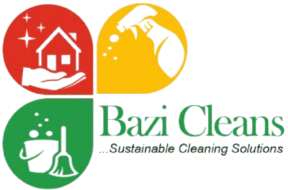Telescopic washing might just be the unsung hero of modern cleaning. Whether you’re scrubbing windows three stories up, blasting grime off solar panels, or detailing your RV’s roof, telescopic tools take your reach—and your results—to the next level.
In this powerful and practical guide, we’ll explore everything you need to know about telescopic washing. This is your comprehensive playbook for mastering telescopic cleaning like never before, from tool selection and technique to safety, specialized attachments, and professional tips.
Why Telescopic Washing Matters
Traditional cleaning methods fall short—literally—when it comes to height and reach. That’s where telescopic tools shine. They’re ideal for:
- Cleaning second-story windows without ladders
- Washing solar panels on rooftops
- Reaching gutters and eaves
- Power-washing siding
- Cleaning high ceilings and light fixtures indoors
- Scrubbing tall vehicles like RVs and trucks
A good telescopic system not only makes these tasks easier—it makes them safer, faster, and more thorough.
Step 1: Choose the Right Telescopic Pole
Material Matters
- Aluminum: Lightweight, corrosion-resistant, budget-friendly
- Fiberglass: Non-conductive (great near electrical wires), more durable
- Carbon Fiber: Ultra-light, premium strength, professional-grade
Extension Length
Pick the pole length based on your use case:
- 6–12 ft: Indoor cleaning, low windows
- 12–24 ft: Second-story windows, gutters
- 24+ ft: Commercial use, multi-story buildings
Locking Mechanism
- Twist-lock: Common and simple
- Flip-lock: Quicker to adjust, better for frequent changes
- Clamp-lock: Heavy-duty, pro-level stability
Step 2: Pick the Best Attachments for the Job
Window Cleaning
- Soft-bristled brush head
- Squeegee with angle adjustment
- Water-fed pole system for spotless results
Vehicle & RV Washing
- Foam brush attachment
- Microfiber mitt head
- Soap dispenser attachment

Gutter Cleaning
- Curved attachment for hook access
- Pressure nozzle for blasting debris
Roof & Solar Panel Cleaning
- Water-fed brush with delicate bristles
- Extension elbow for flat surface contact
Indoor High-Dusting
- Microfiber duster with pivoting head
- Ceiling fan cleaner attachment
Step 3: Understand Water-Fed Pole Systems
Water-fed poles are game-changers. They include:
- A telescopic pole
- A soft-bristled brush head
- A hose connection (for filtered or purified water)
Benefits
- No streaks due to mineral-free water
- Efficient rinsing and scrubbing
- Less physical strain
Ideal for:
- Glass windows
- Solar panels
- High exterior walls
Step 4: Master the Washing Technique
Windows
- Rinse the surface first to loosen debris
- Scrub gently using a circular motion
- Rinse again thoroughly
- Use a squeegee for the finishing touch
Vehicles & RVs
- Rinse top-down
- Apply soap via brush or foam cannon
- Let it sit for 2–3 minutes
- Agitate with microfiber brush
- Final rinse with clean water
Solar Panels
- Use purified water only
- Light pressure to avoid scratches
- Never clean in direct sunlight (prevents streaks)
Step 5: Safety First—Always
General Safety Tips
- Inspect pole and attachments before use
- Use anti-slip gloves for better grip
- Don’t overextend the pole—find the right balance
- Never use metal poles near power lines
Ladder Use (if needed)
- Choose a sturdy A-frame ladder
- Maintain three points of contact
- Have someone spot you when possible
Step 6: Cleaning Solutions That Work Best
Glass Surfaces
- Distilled water + vinegar (1:1 ratio)
- Commercial window cleaning fluid
Solar Panels
- Purified water only
- Mild biodegradable soap if needed
Vehicles
- pH-neutral car wash soap
- Avoid dish soap—it can strip wax
Siding & Gutters
- Mold and mildew cleaner (oxygen bleach-based)
- Degreasing soap for greasy stains
Step 7: Pro Hacks to Boost Efficiency
- Use telescopic poles with built-in soap dispensers
- Wrap your microfiber head in a mesh bag to trap more dirt
- Attach a GoPro or inspection camera to check your progress
- Use angle adapters for tricky corners and eaves
- Clean in the early morning or late afternoon to avoid heat streaks
Step 8: Maintenance of Your Tools
After Each Use
- Rinse attachments thoroughly
- Let everything dry completely
- Store in a cool, dry place
Monthly Maintenance
- Check locking mechanisms
- Replace worn brush heads
- Lubricate joints with silicone spray
Annual Check-up
- Deep clean internal tubing (for water-fed poles)
- Replace worn-out hoses and filters
Step 9: Telescopic Washing Indoors
This isn’t just an outdoor tool! Indoors, it shines for:
- Cleaning high ceilings
- Dusting fans and chandeliers
- Washing tall mirrors
Tips for Indoor Use
- Use dry microfiber heads for dusting
- For washing, wring out excess water
- Protect floors with drop cloths
Step 10: When to Go Pro (and What to Ask)
Sometimes you need help—especially for multi-story office buildings or delicate surfaces like treated glass. When hiring pros:
Ask These Questions
- Do you use water-fed telescopic systems?
- Are your cleaning solutions eco-friendly?
- Do you have experience with solar panels or treated glass?
- What’s your safety protocol for high areas?
Hiring experts can save time and prevent costly mistakes.
Top Telescopic Washing Brands to Check Out
- Unger – Professional-grade window and solar panel tools
- Ettore – Squeegees, poles, and accessories
- DocaPole – Affordable and versatile
- Tucker – Water-fed pole systems
- Mr. LongArm – Known for durability and extension options
Conclusion: Clean Smarter, Not Harder
Telescopic washing is a powerful cleaning solution for today’s height-challenged tasks. With the right equipment, techniques, and a proactive routine, you can reach new cleaning heights—literally.
This 10-step guide covers every angle of telescopic washing: tool selection, cleaning techniques, safety practices, and pro-level tips. Use it as your go-to resource whether you’re a homeowner, facility manager, or professional cleaner.
